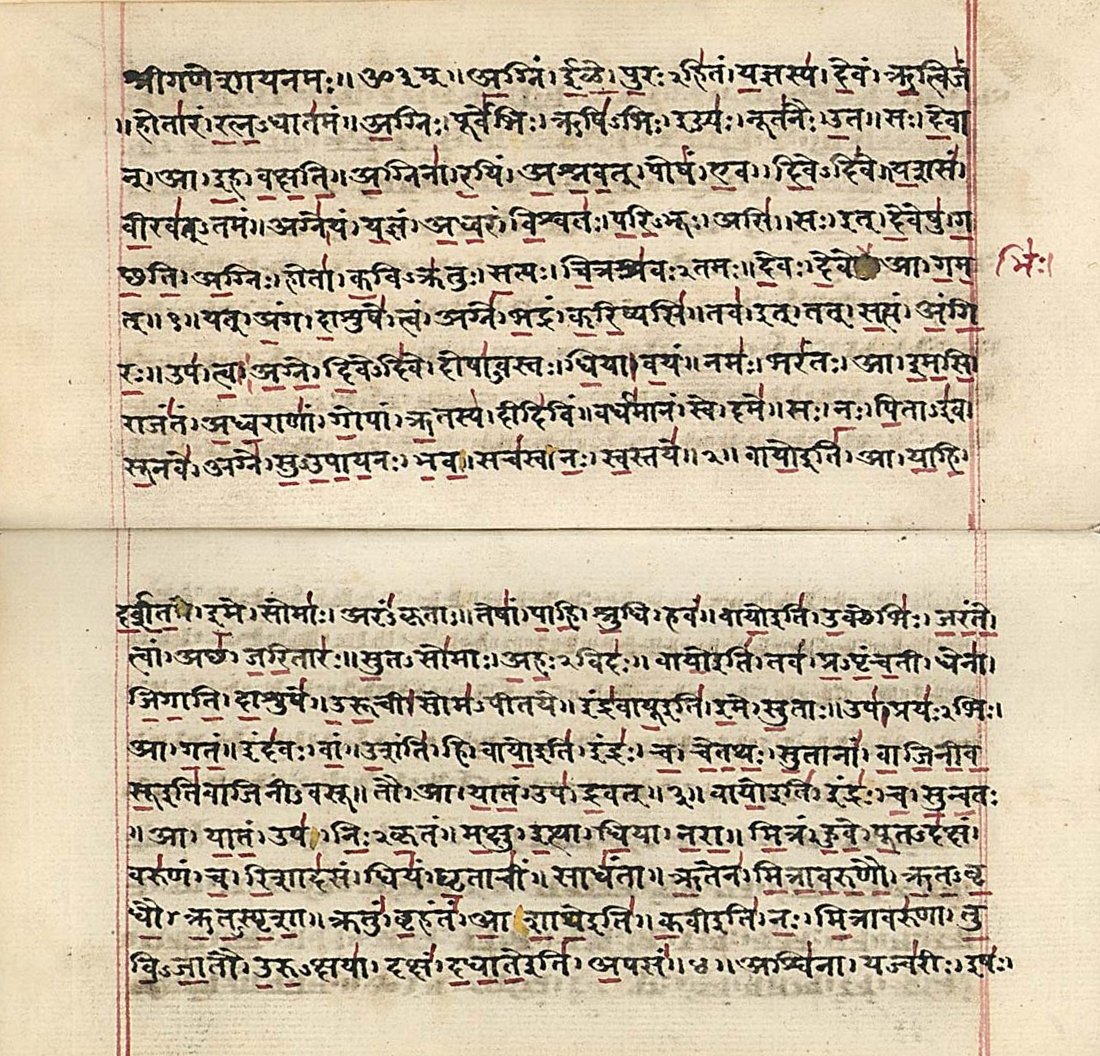|
Sampraday
''Sampradaya'' ( sa, सम्प्रदाय; ), in Indian origin religions, namely Hinduism, Buddhism, Jainism, and Sikhism, can be translated as 'tradition', 'spiritual lineage', 'sect', or 'religious system'. To ensure continuity and transmission of dharma, various ''sampradayas'' have the Guru-shishya parampara in which parampara or lineage of successive ''gurus'' (masters) and '' shishyas'' (disciples) serves as a spiritual channel and provides a reliable network of relationships that lends stability to a religious identity. Shramana is vedic term for seeker or shishya. Identification with and followership of ''sampradayas'' is not static, as ''sampradayas'' allows flexibility where one can leave one ''sampradaya'' and enter another or practice religious syncretism by simultaneously following more than one ''sampradaya''. '' Samparda'' is a punjabi language term, used in Sikhism, for ''sampradayas''. Guru-shishya parampara Sampradayas are living traditions of ... [...More Info...] [...Related Items...] OR: [Wikipedia] [Google] [Baidu] |
Akhara
Akhara or Akhada ( Sanskrit and Hindi: अखाड़ा, shortened to ''khara'' Hindi: खाड़ा) is an Indian word for a place of practice with facilities for boarding, lodging and training, both in the context of Indian martial artists or a '' sampradaya'' monastery for religious renunciates in Guru–shishya tradition. it is similar to the Greek-origin word ''academy'' and the English word ''school'', can be used to mean both a physical institution or a group of them which share a common lineage or are under a single leadership, such as the school of monastic thought or the school of martial arts. Unlike the gurukul in which students live and study at the home of a guru, members of an akhara although train under a guru but they do not live a domestic life. Some strictly practice Brahmacharya (celibacy) and others may require complete renunciation of worldly life. For example, wrestlers are expected to live a pure life while living at akhara with other fellow wrestl ... [...More Info...] [...Related Items...] OR: [Wikipedia] [Google] [Baidu] |
Matha
A ''matha'' (; sa, मठ, ), also written as ''math'', ''muth'', ''mutth'', ''mutt'', or ''mut'', is a Sanskrit word that means 'institute or college', and it also refers to a monastery in Hinduism.Matha Encyclopædia Britannica Online 2009 An alternative term for such a monastery is ''adheenam''. The earliest epigraphical evidence for ''mathas'' related to Hindu-temples comes from the 7th to 10th century CE. The most famous ''mathas'' or ''peethams'', which came to be affiliated with the Advaita tradition in the 14th century, are Govardhanmaṭha Pīṭhaṃ at |
Sects Of Sikhism
Sub-traditions, also known as '' Samparda'' (Gurmukhi: ਸੰਪਰਦਾ; ''saparadā'') in the Punjabi language, are sub-traditions within Sikhism that believe in different approaches to practicing the religion. While all sampradas believe in Waheguru and one creator, do not believe in idol worship or caste system, different interpretation have emerged over time, some of which practise having a living teacher as the leader orthodox. The major historic traditions in Sikhism, states Harjot Oberoi, have included Udasi, Nirmala, Nanakpanthi, Khalsa, Sahajdhari, Namdhari Kuka, Nirankari and Sarvaria. During the persecution of Sikhs by Mughals, several splinter groups emerged such as the Udasis, Minas, and Ramraiyas during the early Guru period during the period between the death of Guru Har Krishan and the establishment of Guru Tegh Bahadur as the ninth Sikh Guru. These sects have had considerable differences. Some of these sects were financially and administratively supported b ... [...More Info...] [...Related Items...] OR: [Wikipedia] [Google] [Baidu] |
Guru
Guru ( sa, गुरु, IAST: ''guru;'' Pali'': garu'') is a Sanskrit term for a "mentor, guide, expert, or master" of certain knowledge or field. In pan-Indian traditions, a guru is more than a teacher: traditionally, the guru is a reverential figure to the disciple (or '' shisya'' in Sanskrit, literally ''seeker f knowledge or truth'' or student, with the guru serving as a "counselor, who helps mold values, shares experiential knowledge as much as literal knowledge, an exemplar in life, an inspirational source and who helps in the spiritual evolution of a student". Whatever language it is written in, Judith Simmer-Brown explains that a tantric spiritual text is often codified in an obscure twilight language so that it cannot be understood by anyone without the verbal explanation of a qualified teacher, the guru. A guru is also one's spiritual guide, who helps one to discover the same potentialities that the ''guru'' has already realized. The oldest references to the concep ... [...More Info...] [...Related Items...] OR: [Wikipedia] [Google] [Baidu] |
Hinduism
Hinduism () is an Indian religion or ''dharma'', a religious and universal order or way of life by which followers abide. As a religion, it is the world's third-largest, with over 1.2–1.35 billion followers, or 15–16% of the global population, known as Hindus. The word ''Hindu'' is an exonym, and while Hinduism has been called the oldest religion in the world, many practitioners refer to their religion as '' Sanātana Dharma'' ( sa, सनातन धर्म, lit='the Eternal Dharma'), a modern usage, which refers to the idea that its origins lie beyond human history, as revealed in the Hindu texts. Another endonym is ''Vaidika dharma'', the dharma related to the Vedas. Hinduism is a diverse system of thought marked by a range of philosophies and shared concepts, rituals, cosmological systems, pilgrimage sites, and shared textual sources that discuss theology, metaphysics, mythology, Vedic yajna, yoga, agamic rituals, and temple building, among other topi ... [...More Info...] [...Related Items...] OR: [Wikipedia] [Google] [Baidu] |
Indian Religions
Indian religions, sometimes also termed Dharmic religions or Indic religions, are the religions that originated in the Indian subcontinent. These religions, which include Hinduism, Jainism, Buddhism, and Sikhism,Adams, C. J."Classification of religions: Geographical", ''Encyclopædia Britannica'', 2007. Retrieved 15 July 2010 are also classified as Eastern religions. Although Indian religions are connected through the history of India, they constitute a wide range of religious communities, and are not confined to the Indian subcontinent. Evidence attesting to prehistoric religion in the Indian subcontinent derives from scattered Mesolithic rock paintings. The Harappan people of the Indus Valley civilisation, which lasted from 3300 to 1300 BCE (mature period 2600–1900 BCE), had an early urbanized culture which predates the Vedic religion. The documented history of Indian religions begins with the historical Vedic religion, the religious practices of the early Indo-Ir ... [...More Info...] [...Related Items...] OR: [Wikipedia] [Google] [Baidu] |
Tibetan Buddhism
Tibetan Buddhism (also referred to as Indo-Tibetan Buddhism, Lamaism, Lamaistic Buddhism, Himalayan Buddhism, and Northern Buddhism) is the form of Buddhism practiced in Tibet and Bhutan, where it is the dominant religion. It is also in majority regions surrounding the Himalayan areas of India (such as Ladakh, Sikkim, Arunachal Pradesh, and a minority in Himachal Pradesh and Uttarakhand), in much of Central Asia, in the southern Siberian regions such as Tuva, and in Mongolia. Tibetan Buddhism evolved as a form of Mahāyāna Buddhism stemming from the latest stages of Indian Buddhism (which also included many Vajrayāna elements). It thus preserves many Indian Buddhist tantric practices of the post-Gupta early medieval period (500 to 1200 CE), along with numerous native Tibetan developments. In the pre-modern era, Tibetan Buddhism spread outside of Tibet primarily due to the influence of the Mongol Yuan dynasty (1271–1368), founded by Kublai Khan, which had rul ... [...More Info...] [...Related Items...] OR: [Wikipedia] [Google] [Baidu] |
Sanskrit
Sanskrit (; attributively , ; nominalization, nominally , , ) is a classical language belonging to the Indo-Aryan languages, Indo-Aryan branch of the Indo-European languages. It arose in South Asia after its predecessor languages had Trans-cultural diffusion, diffused there from the northwest in the late Bronze Age#South Asia, Bronze Age. Sanskrit is the sacred language of Hinduism, the language of classical Hindu philosophy, and of historical texts of Buddhism and Jainism. It was a lingua franca, link language in ancient and medieval South Asia, and upon transmission of Hindu and Buddhist culture to Southeast Asia, East Asia and Central Asia in the early medieval era, it became a language of religion and high culture, and of the political elites in some of these regions. As a result, Sanskrit had a lasting impact on the languages of South Asia, Southeast Asia and East Asia, especially in their formal and learned vocabularies. Sanskrit generally connotes several Indo-Aryan lang ... [...More Info...] [...Related Items...] OR: [Wikipedia] [Google] [Baidu] |
Padma Purana
The ''Padma Purana'' ( sa, पद्मपुराण or पाद्मपुराण, or ) is one of the eighteen Major Puranas, a genre of texts in Hinduism. It is an encyclopedic text, named after the lotus in which creator god Brahma appeared, and includes large sections dedicated to Vishnu, as well as significant sections on Shiva and Shakti. The manuscripts of Padma Purana have survived into the modern era in numerous versions, of which two are major and significantly different, one traced to eastern and the other to western regions of India. It is one of the voluminous text, claiming to have 55,000 verses, with the actual surviving manuscripts showing about 50,000. The style of composition and textual arrangement suggest that it is likely a compilation of different parts written in different era by different authors. The text includes sections on cosmology, mythology, genealogy, geography, rivers and seasons, temples and pilgrimage to numerous sites in India � ... [...More Info...] [...Related Items...] OR: [Wikipedia] [Google] [Baidu] |
Hindu
Hindus (; ) are people who religiously adhere to Hinduism.Jeffery D. Long (2007), A Vision for Hinduism, IB Tauris, , pages 35–37 Historically, the term has also been used as a geographical, cultural, and later religious identifier for people living in the Indian subcontinent. The term ''"Hindu"'' traces back to Old Persian which derived these names from the Sanskrit name ''Sindhu'' (सिन्धु ), referring to the river Indus. The Greek cognates of the same terms are "''Indus''" (for the river) and "''India''" (for the land of the river). The term "''Hindu''" also implied a geographic, ethnic or cultural identifier for people living in the Indian subcontinent around or beyond the Indus River, Sindhu (Indus) River. By the 16th century CE, the term began to refer to residents of the subcontinent who were not Turkic peoples, Turkic or Muslims. Hindoo is an archaic spelling variant, whose use today is considered derogatory. The historical development of Hindu self-i ... [...More Info...] [...Related Items...] OR: [Wikipedia] [Google] [Baidu] |
Dynasty
A dynasty is a sequence of rulers from the same family,''Oxford English Dictionary'', "dynasty, ''n''." Oxford University Press (Oxford), 1897. usually in the context of a monarchical system, but sometimes also appearing in republics. A dynasty may also be referred to as a "house", "family" or "clan", among others. Historians periodize the histories of many states and civilizations, such as Ancient Iran (3200 - 539 BC), Ancient Egypt (3100 – 30 BC) and Ancient and Imperial China (2070 BC – AD 1912), using a framework of successive dynasties. As such, the term "dynasty" may be used to delimit the era during which a family reigned. Before the 18th century, most dynasties throughout the world have traditionally been reckoned patrilineally, such as those that follow the Frankish Salic law. In polities where it was permitted, succession through a daughter usually established a new dynasty in her husband's family name. This has changed in all of Europe's remaining ... [...More Info...] [...Related Items...] OR: [Wikipedia] [Google] [Baidu] |





.jpeg/1200px-Tibetan_Buddhism_(214837929).jpeg)


.jpg)
